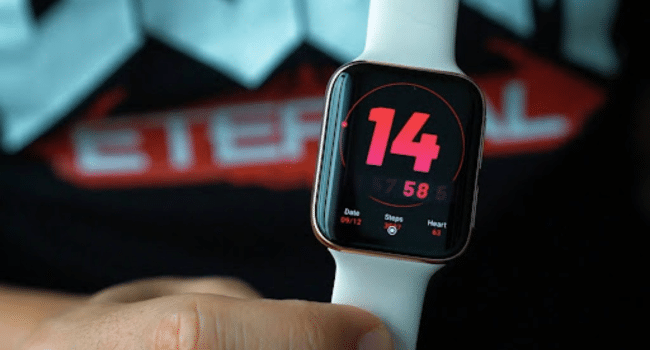Table of Contents
The playing field has changed. No longer just about raw talent and grit, athletic performance is now being supercharged by cutting-edge technology. Today’s athletes have an arsenal of gadgets at their disposal, transforming everything from how they train to how they recover.
Join us as we delve into the top tech tools shaping the future of sports and pushing human potential to new heights.
Heart Rate Monitors: The Essential Tool for Cardiovascular Training
Heart rate monitors are among the most widely used gadgets in sports today. These devices come in various forms, such as wristwatches and chest straps, and offer real-time feedback on cardiovascular activity. By calculating your projected heart rate max (220 minus your age) and monitoring it during exercise, you can ensure you’re training within the optimal range for your fitness goals.
- Benefits:
- Provides objective measures of cardiovascular effort.
- Tracks improvements over time, such as decreased heart rate at the same work output.
- Affordable and easy to use with minimal education required.
Sleep Trackers: Understanding Rest and Recovery
Quality sleep is crucial for athletic performance, and sleep trackers help athletes monitor their rest patterns. These devices assess various metrics, including heart rate variability (HRV), to provide insights into sleep quality and recovery status.
- Key Features:
- Tracks sleep stages and duration.
- Measures HRV to gauge recovery.
- Offers personalized recommendations for improving sleep habits.
Velocity Trackers: Measuring Speed and Power
Velocity trackers are essential for athletes who need to move heavy loads quickly. These devices measure the speed at which a load moves, providing data on whether an athlete is improving, fatigued, or nearing their one-rep max without going to failure.
- Advantages:
- Helps in tracking progress and identifying fatigue.
- Provides data for optimizing training programs.
- Becoming more affordable and accessible.
Force Plates: Analyzing Ground Reaction Forces
Force plates are sophisticated tools that measure the ground reaction force of athletic movements, such as jumping. They offer hundreds of data points that can be analyzed to understand an athlete’s power, asymmetry between limbs, and landing mechanics.
- Applications:
- Commonly used in high-performance environments like colleges and professional teams.
- Helps in injury prevention and rehabilitation.
- Provides longitudinal data for tracking performance over time.
Training Apps: Streamlining Workout Management
Training apps like Train Heroic, True Coach, Bridge, and Teambuildr have transformed how coaches and athletes manage workouts. These platforms allow coaches to schedule workouts, provide demonstration videos, and track performance metrics.
- Features:
- Simplifies workout planning and logging.
- Offers metrics like volume load, RPE scoring, and predicted RM%.
- Ideal for remote coaching and athlete management.
Timing Gates: Enhancing Speed and Agility
Timing gates are indispensable for athletes looking to improve their speed, change of direction, or sprinting performance. Companies like Freelap, Dartfish, and Smartspeed offer timing gates that provide accurate measurements of speed and response times.
- Benefits:
- Highly accurate compared to hand timing.
- Useful for measuring speed/acceleration metrics.
- Allows coaches to focus on coaching rather than timing.
Biometric Wearables: Unlocking the Power of Personal Data
Beyond tracking movement and external metrics, biometric wearables are emerging as a powerful tool for understanding the inner workings of the athlete’s body. These devices delve deeper into physiological data, offering a comprehensive view of an individual’s health and performance status that is invaluable for athletes and those who place bets.
Analyzing real-time physiological data such as heart rate variability, lactate thresholds, and hydration levels, bettors can gain a deeper understanding of an athlete’s condition and potential, leading to more informed decisions.
Key Features:
- Continuous Glucose Monitoring (CGM): CGM devices track blood glucose levels in real-time, helping athletes optimize their nutrition and fueling strategies for peak performance.
- Lactate Threshold Sensors: These wearable sensors measure lactate levels during exercise, providing insights into an athlete’s endurance capacity and training zones.
- Hydration Monitors: These devices monitor sweat rate and electrolyte loss, helping athletes maintain proper hydration and prevent dehydration-related performance decline.
- Stress and Recovery Trackers: These wearables utilize heart rate variability (HRV) and other metrics to assess stress levels and guide recovery strategies for optimal training adaptation.
Conclusion
The fusion of sports and technology is still in its early stages, but it’s clear that these gadgets are redefining what’s possible on the field, track, and court. As technology continues to evolve, we can only imagine how it will further elevate athletic performance, pushing the boundaries of human potential and inspiring a new generation of athletes to reach for greatness.
Image Source – Unsplash
Read More on KulFiy:
Protein Requirement For Athletes | Guide To Athletic Performance
The Evolution of Personal Fitness: From Jogging to High-Tech Tracking
